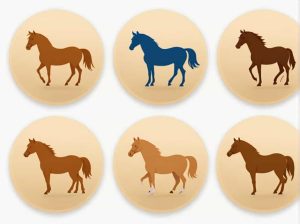Rising to the trot also known as posting trot is an essential skill for horseback riders. It helps the rider stay in rhythm with the horse’s movement while reducing the impact on both the rider and the horse’s back. But knowing exactly when to rise in the trot can be confusing for beginners.
In this guide we will explain how to determine the correct moment to rise why posting trot is important and how to improve your technique for a smoother and more comfortable ride.
What Is the Posting Trot?
The trot is a two-beat gait where the horse moves its legs in diagonal pairs. In a sitting trot the rider remains seated absorbing the movement with their seat and legs. In a posting trot the rider rises and sits in rhythm with the horse’s strides making the ride more comfortable.
Why Should You Rise in the Trot?
Posting trot is beneficial for several reasons:
- Reduces Impact: Less strain on the rider’s lower back and the horse’s spine.
- Improves Balance: Helps the rider stay in sync with the horse’s movement.
- Enhances Comfort: Makes trotting smoother for both horse and rider.
- Saves Energy: Sitting trot can be tiring; posting trot helps conserve energy on long rides.
When Should You Rise in the Trot?
To post correctly you should rise when the horse’s outside front leg moves forward. This is known as rising on the correct diagonal.
How to Find the Correct Diagonal
-
Watch the Horse’s Shoulders
- The outside front leg (the leg closer to the arena wall or fence) should move forward as you rise.
- You should sit when the outside front leg moves back.
-
Feel the Rhythm
- As the horse moves feel the push from the inside hind leg.
- The natural push helps lift you out of the saddle at the right moment.
-
Check and Adjust
- If you are rising at the wrong moment sit for one extra beat and restart.
- Riders often say “Rise and fall with the leg on the wall” to remember the correct timing.
How to Practice Rising at the Right Time
1. Ride Without Stirrups First
Practicing without stirrups helps develop a stronger seat and feel for the horse’s movement. Try sitting trot without stirrups to understand the rhythm before attempting to post.
2. Watch Another Rider’s Legs
Observing experienced riders can help you understand how the posting trot should look. Notice when they rise and sit in relation to the horse’s legs.
3. Use a Mirror or Record Yourself
If available ride in an arena with mirrors or record a video to analyze your posting trot. This helps identify whether you are rising at the right time.
4. Work with a Trainer
A riding instructor can give real-time feedback to help you correct your diagonal quickly.
Common Mistakes and How to Fix Them
1. Rising Too Late or Too Early
- Mistake: The rider rises when the wrong front leg moves forward.
- Solution: Look at the outside front leg and time your rise with its movement.
2. Bouncing Too Much
- Mistake: The rider moves too forcefully causing instability.
- Solution: Relax your legs and allow the horse’s movement to naturally lift you.
3. Using the Stirrup Too Much
- Mistake: Pressing down hard on the stirrups instead of using leg and core muscles.
- Solution: Engage your thighs and core rather than pushing from the stirrups.
4. Sitting Too Heavily
- Mistake: Dropping into the saddle too hard on the downbeat.
- Solution: Control your descent with your leg and core strength.
Advanced Posting Trot Techniques
Once you master the basics you can refine your posting trot further:
1. Adjusting the Length of Your Post
Depending on the horse’s speed and energy adjust how high you rise to maintain a smooth rhythm.
2. Riding Without Stirrups in Posting Trot
Advanced riders practice posting without stirrups to develop balance and strength.
3. Changing Diagonals Mid-Trot
If you switch directions in the arena change your diagonal by sitting for one extra beat and then rising on the new outside leg.
Knowing when to rise in the trot is essential for a smooth and effective posting trot. By timing your rise with the horse’s outside front leg you can improve your balance reduce strain and make trotting more comfortable for both you and your horse.
With practice watching experienced riders and focusing on your horse’s movement you will develop a natural feel for the correct posting trot rhythm. Keep practicing and soon rising at the right moment will become second nature!

